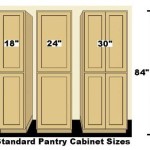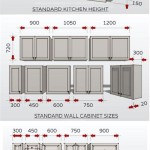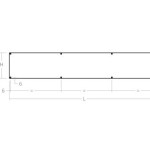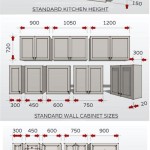How To Vinyl Wrap a Kitchen Countertop
Vinyl wrapping kitchen countertops offers a cost-effective and relatively simple way to update the appearance of a kitchen without the expense and disruption of a full renovation. This process involves applying a self-adhesive vinyl film to the existing countertop surface, creating a new look that can mimic stone, wood, or solid colors. While the project is manageable for a DIY enthusiast, careful preparation and precise application are crucial for achieving a professional and durable finish. This article provides a comprehensive guide to vinyl wrapping a kitchen countertop, covering materials, preparation, application techniques, and essential considerations for long-term durability.
Planning and Material Selection
The success of a vinyl wrap project begins with meticulous planning and the selection of appropriate materials. Before purchasing any materials, accurately measure the surface area of the countertop to be wrapped. Add extra material (at least 10% more) to account for overlaps, mistakes, and complex edges. When selecting the vinyl, consider the options available in terms of thickness, finish, and adhesive quality. Thicker vinyl tends to be more durable and forgiving during application, while the finish (matte, gloss, or textured) will dictate the final aesthetic.
High-quality vinyl films designed specifically for countertops are essential for achieving a professional and long-lasting result. These films are typically thicker, more resistant to heat and moisture, and have a stronger adhesive than standard vinyl films intended for signage or decorative purposes. Opt for vinyl that is advertised as being heat-resistant and waterproof or water-resistant, as kitchen countertops are frequently exposed to these elements. Reputable brands often offer warranties on their vinyl products, providing an added layer of confidence in the material's quality and longevity.
Along with the vinyl film itself, several other materials are required for a successful countertop wrap. These include:
Cleaning Supplies:
Degreaser, all-purpose cleaner, and microfiber cloths are necessary for thoroughly cleaning the countertop surface.Measuring Tools:
A measuring tape, ruler, and possibly a flexible measuring tape are needed for accurate measurements.Cutting Tools:
A sharp utility knife or X-Acto knife, along with a cutting mat, is crucial for precise cuts. Replace the blade frequently to ensure clean edges and prevent tearing of the vinyl.Application Tools:
A squeegee (preferably with felt edges), heat gun or hairdryer, and application fluid (a mixture of water and a few drops of dish soap) are essential for applying the vinyl smoothly and evenly.Safety Equipment:
Gloves and safety glasses are recommended to protect hands and eyes during the cleaning and cutting processes.Seam Sealer (Optional):
For countertops with seams or joins, a seam sealer can help to prevent water from penetrating under the vinyl and causing damage.Primer (Optional):
For uneven or porous surfaces, a vinyl primer can improve adhesion and create a smoother base for the wrap. Check the vinyl manufacturer's recommendations regarding primer compatibility.
Carefully consider the color and pattern of the vinyl film. Obtain samples and test them in the kitchen to ensure they complement the existing décor and lighting. Remember that the chosen pattern will be a dominant feature of the kitchen, so select something that is aesthetically pleasing and that will remain so for the desired lifespan of the wrap.
Countertop Preparation: The Foundation for Success
Proper preparation is paramount to achieving a smooth, bubble-free, and long-lasting vinyl wrap. The goal is to create a perfectly clean, smooth, and stable surface for the vinyl to adhere to. Any imperfections on the countertop surface will be visible through the vinyl, so thorough preparation is essential.
The first step is to thoroughly clean the countertop. Begin by removing any items from the surface. Use a degreaser to remove any grease or oil buildup, especially around the stovetop and sink. Follow this with an all-purpose cleaner to remove any remaining dirt and grime. Rinse the surface thoroughly with clean water and dry it completely with microfiber cloths. Avoid using paper towels, as they can leave behind lint.
Once the countertop is clean, inspect it for any imperfections, such as chips, cracks, or uneven surfaces. Fill any small chips or cracks with a countertop filler or epoxy. Allow the filler to dry completely according to the manufacturer's instructions, and then sand it smooth with fine-grit sandpaper. For larger imperfections, consider applying a thin layer of self-leveling compound to create a perfectly smooth surface. Again, allow the compound to dry completely and sand it smooth.
If the countertop surface is porous or uneven, applying a vinyl primer can significantly improve adhesion. The primer creates a smooth, even surface for the vinyl to adhere to and helps to prevent the vinyl from lifting or peeling over time. Choose a primer that is specifically designed for use with vinyl films and follow the manufacturer's instructions for application. Apply a thin, even coat of primer and allow it to dry completely before proceeding. After the primer is dry, clean the surface again with a tack cloth to remove any dust or debris.
Finally, ensure the countertop is completely dry before beginning the vinyl application. Moisture can interfere with the adhesion of the vinyl and lead to bubbles or peeling. If necessary, use a hairdryer or heat gun to gently warm the surface and remove any remaining moisture. The countertop should be at room temperature before proceeding.
Vinyl Application: Step-by-Step Guide
The vinyl application process requires patience, precision, and a steady hand. It is often helpful to have an assistant, especially for larger countertops. The key is to work slowly and methodically, paying close attention to detail. Following these steps will help achieve a professional-looking vinyl wrap.
Begin by cutting a piece of vinyl that is slightly larger than the area to be covered, allowing for overlap on all sides. This overlap will be trimmed later. Place the vinyl face down on a clean, flat surface, such as a cutting mat. Carefully peel back a small portion of the backing paper, exposing the adhesive side of the vinyl. Fold the backing paper back on itself to prevent it from sticking to the vinyl.
Position the vinyl over the countertop, aligning it carefully with the edges. Gently press the exposed adhesive portion of the vinyl onto the countertop surface. Use a squeegee to smooth the vinyl, working from the center outwards. Apply firm, even pressure to remove any air bubbles and ensure good adhesion. Continue peeling back the backing paper gradually, smoothing the vinyl with the squeegee as you go.
For complex curves or edges, use a heat gun or hairdryer to gently warm the vinyl. This will make it more pliable and easier to stretch and conform to the shape of the countertop. Be careful not to overheat the vinyl, as this can damage it. Use the squeegee to work the warmed vinyl around the edges and into any crevices.
If air bubbles appear, use a pin or needle to carefully puncture the bubble and then smooth the vinyl with the squeegee. Alternatively, you can gently lift the vinyl and reapply it, taking care to smooth out any air pockets. For larger bubbles, use a heat gun to warm the vinyl and then smooth it with the squeegee.
Once the entire countertop is covered, use a sharp utility knife or X-Acto knife to trim away the excess vinyl around the edges. Use a ruler or straight edge as a guide for clean, straight cuts. Be careful not to damage the countertop surface. Leave a small overlap of vinyl around the edges and then use a heat gun to warm the vinyl and fold it over the edge of the countertop, securing it in place with the squeegee.
For countertops with seams or joins, apply a seam sealer to prevent water from penetrating under the vinyl. Follow the manufacturer's instructions for applying the seam sealer. Apply a thin, even bead of sealer along the seam and then wipe away any excess with a clean cloth.
After completing the application, inspect the entire countertop surface for any imperfections. Use a heat gun to warm any areas where the vinyl is not adhering properly and then smooth it with the squeegee. Allow the vinyl to cure for at least 24 hours before using the countertop.
Maintenance and Durability Considerations
While vinyl wrapped countertops are relatively durable, proper maintenance is essential to prolong their lifespan and keep them looking their best. Understanding the limitations of vinyl and taking appropriate precautions will help prevent damage and ensure the longevity of the wrap.
Clean the countertop regularly with a mild soap and water solution. Avoid using abrasive cleaners or harsh chemicals, as these can damage the vinyl. Wipe the countertop dry after each use to prevent water spots.
While the vinyl may be heat-resistant to a certain extent, it is advisable to use trivets or hot pads to protect the surface from hot pots and pans. Prolonged exposure to high heat can cause the vinyl to warp or peel.
Use cutting boards when preparing food to avoid scratching the vinyl surface. While the vinyl is scratch-resistant, it is not scratch-proof. Sharp knives and utensils can easily damage the wrap.
Avoid placing heavy objects on the countertop, as this can cause the vinyl to dent or tear. Distribute weight evenly across the surface.
If the vinyl wrap becomes damaged, it can be repaired or replaced. Small tears or scratches can be patched with a small piece of vinyl. Larger areas may require replacing the entire section of vinyl.
The lifespan of a vinyl wrapped countertop will depend on the quality of the vinyl, the preparation of the surface, and the level of care it receives. With proper maintenance, a vinyl wrap can last for several years, providing a cost-effective and attractive alternative to more expensive countertop materials.

How To Wrap A Kitchen Worktop Diy Vinyl Wrapping Tutorial

How To Wrap A Kitchen Worktop Diy Vinyl Wrapping Tutorial

How To Vinyl Wrap A Worktop Surface Your Home Style

Self Adhesive Vinyl Wrap For Kitchen Worktops Dc Fix Marble White

Tutorial How To Wrap A Kitchen Worktop With Cover Styl Adhesive S
Revolutionize Your Kitchen With Vinyl Countertop Wrapping Service Iconickitchenwraps Ie

Kitchen Vinyl Wrap Worktop Wrapping

Oak Grey Dc Fix Self Adhesive Vinyl Kitchen Wrap For Worktops 67 5cm Wide

Dc Fix Concrete Grey Self Adhesive Vinyl Kitchen Wrap Wraps

How To Vinyl Wrap Your Kitchen Benchtop
Related Posts








